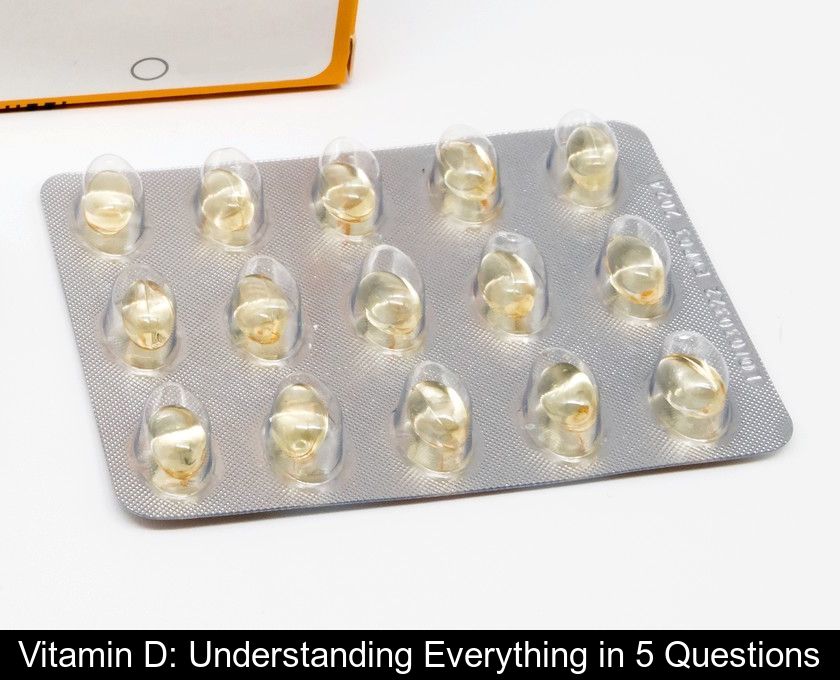Vitamin D: Understanding Everything In 5 Questions
Vitamin D, known to significantly reduce the risks of osteoporosis and fractures in elderly individuals, is generating a lot of discussion. Recent studies suggest that this vitamin could prevent certain cancers and reduce the risks of cardiovascular diseases. Should we therefore undergo a treatment? We offer you a better understanding of the role and usefulness of this vitamin in 5 questions.
What is vitamin D?
Vitamin D is a fat-soluble vitamin, meaning it is soluble in fatty substances.
It is synthesized by our body, specifically in the skin, under the action of UV radiation from the sun.
That is why this substance, commonly referred to as a vitamin, is also a hormone that our body produces and needs to perform certain functions, such as maintaining a healthy immune system.
2- Which foods contain the most vitamin D?
The foods richest in Vitamin D are fatty fish (sardines, tuna, mackerel, salmon, trout, herring), liver, butter, and eggs.
However, this vitamin is unique in that it is primarily synthesized by the skin under the influence of sunlight, so dietary intake accounts for less than one-third.
3- What is the purpose of vitamin D?
Vitamin D is involved in the absorption of calcium and phosphorus by the intestines. It therefore plays an essential role in bone mineralization and is necessary to ensure the strength of the skeleton. In older people, it has been proven that supplementation significantly reduces the risk of fractures.
Conversely, a deficiency can cause fatigue and muscle pain, and at a more advanced stage, osteomalacia in adults (i.e. bone decalcification).
In young children, a deficiency of this vitamin leads to rickets. That is why in France, children receive supplements of vitamins A, D, E, and C.
4- How to avoid deficiencies?
Deficiencies occur in individuals who are not sufficiently exposed to sunlight and/or have insufficient intake of Vitamin D.
The risk of deficiency is high in:
• Elderly individuals who have limited sun exposure
• Individuals with dark or black skin
• Breastfed infants as breast milk contains relatively low levels of Vitamin D
• Individuals living in regions with little sunlight.
Therefore, even though UV rays can be harmful to health, a minimum amount of sun exposure is necessary.
Note: Vitamin D remains available for two months after sun exposure as our body stores reserves.
For individuals at risk or suffering from osteoporosis, the recommended daily intake is currently subject to debate and ranges from 10 micrograms (400 IU) to over 20 micrograms (800 IU).
5- What are the risks in case of overdose?
Before starting a vitamin D treatment, it is advisable to seek advice from your doctor or pharmacist. Unless in specific cases, your general practitioner will agree to prescribe this vitamin as most French people are deficient in it.
However, note that this vitamin can be dangerous if taken in excessive quantities.
An overdose can lead to an increase in calcium in the blood and urine, resulting in nausea, vomiting, and even kidney failure. That is why a medical opinion is strongly recommended before any treatment, for both adults and children.









